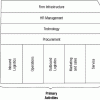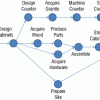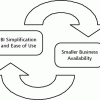Strategic advice to leverage new technologies
Technology is at the heart of nearly every enterprise, enabling new business models and strategies, and serving as the catalyst to industry convergence. Leveraging the right technology can improve business outcomes, providing intelligence and insights that help you make more informed and accurate decisions. From finding patterns in data through data science, to curating relevant insights with data analytics, to the predictive abilities and innumerable applications of AI, to solving challenging business problems with ML, NLP, and knowledge graphs, technology has brought decision-making to a more intelligent level. Keep pace with the technology trends, opportunities, applications, and real-world use cases that will move your organization closer to its transformation and business goals.
Recently Published
Enterprises need increasingly sophisticated information systems in order to effectively deliver a growing number of products and services across multiple channels and markets. Leaders trying to cope with this complexity often find themselves with IT landscapes that have quickly spiraled out of control. Too many systems, mismatching technologies, tools poorly aligned with processes, and disarray among stakeholders are all symptoms of an application portfolio left to grow without a strong business architecture.
Capability analysis is an established approach to determining the needs for improvement in business operations. It focuses on a functional breakdown of an enterprise's capabilities. These capabilities are the means to do the work of the enterprise.
The subject of the September 2010 issue of the Cutter Benchmark Review (CBR) was Kanban adoption (see "Kanban for Project Management: Should We Buy In?" Vol. 10, No. 9).
Last month, I discussed some of the factors influencing the growing adoption of data mining and predictive analytics (see "The Slow, Steady Climb for Data Mining, Predictive Analytics," 1 February 2011).
Devops: Beginning with the End in Mind
One of Steven Covey's 7 Habits of Highly Effective People is to "begin with the end in mind."1 When developing software, this is a good rule. Even as teams embrace agile software development and practices that move testing earlier into the development process, the testing of delivery into production is often neglected.
Real-time coverage of the recent disasters in Japan, the social unrest in the Middle East and Africa, and the Allied bombing campaign underway in Libya all expose the limitations of such information; specifically, the clear need to put real-time information into some kind of context with the use of additional, supplemental information.
BI for the Rest of Us
Bringing BI down to the coalface has long been a goal for both vendors and IT managers -- in light of the fact that BI remains largely confined to the 15%-20% of workers in an organization who analyze data.












